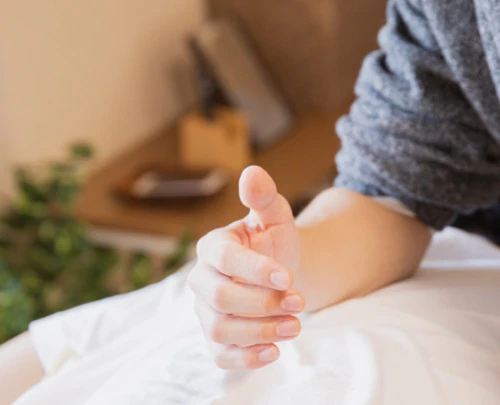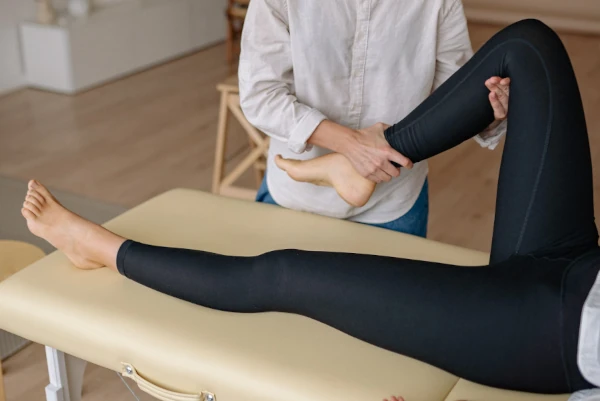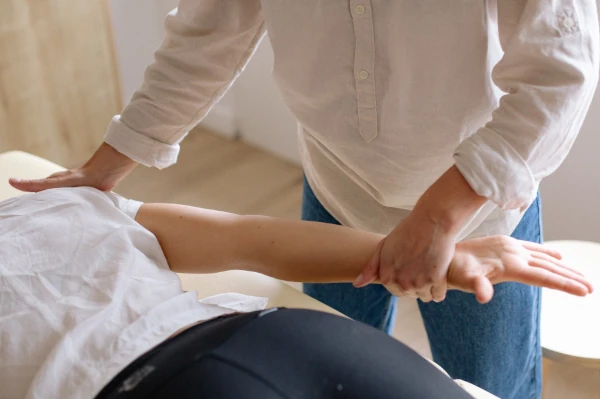
Tuina is a vigorous form of massage that originated in China. It’s based on the principles of Traditional Chinese Medicine (TCM), so it activates the Acupressure points and works along the organ meridian pathways.
Tuina Chinese massage (also known as Tui Na) stimulates the qi or chi (the healing energy flow) using Acupressure hand movements, full body stretches, joint rotations, and other Chinese massage methods. Tuina utiltizes a wide variety of hand techniques using vigorous hand and body movements.
Tuina massage is a traditional Chinese medicinal technique which uses manual manipulation to improve circulation, reduce pain, and promote overall wellbeing. Hospitals in China have a Massage Therapy department that employs Tuina massage practitioners.
A skilled Tuina (Tui Na) practitioner can apply these massage techniques with a wide variety of strokes, from gentle ones to strong and intense applications, depending on the condition of the client.
Oils are usually not used in traditional Tuina massage. The client is normally fully clothed when receiving a session. Oil can be used on special areas, like the neck, hands, and feet. Tuina massage focuses on pushing and grasping bodywork techniques to release tight muscles, relieve pain, and open the healing energy within the meridians.
Benefits of Tuina
Tuina, Chinese massage, helps to relieve muscle cramping, tension, stiffness, and pain, such as in the back, shoulders, and neck. It increases the range of motion of the joints and balances the qi or chi energy in the meridians.
Tuina (Tui Na) treatments can help with other common ailments, such as headaches and insomnia. Tuina also boosts circulation, reduces stress, increases relaxation, and promotes overall optimal health.

Tuina Techniques
You can use the following Tuina massage techniques in your healing work.
Firm, Deep Pressure
This is the most fundamental Tuina massage therapy technique. It’s done by using the thumbs, fingers, palms, the side of the hand, or the knuckles to apply steady, stationary pressure.
To relax an area or relieve pain, apply pressure gradually and hold without any movement for several minutes at a time. One minute of steady pressure, when applied gradually, calms and relaxes the nervous system, promoting greater healing.

Kneading Muscles
This Tuina (Tui Na) technique vigorously uses the thumbs and fingers along with the heels of the hands to firmly squeeze large muscle groups. The motion is similar to that of kneading a large mass of dough. To stimulate an area, apply pressure for a shorter amount of time — only several seconds.
To apply kneading techniques, simply lean the weight of your upper body into a tight muscle, as you bring your fingers into the heel of your hands. Create firm compression to make the tight muscle more soft and pliable. This relieves general stiffness, shoulder and neck tension, constipation, and spasms in the calf muscles.
Brisk Rubbing
This method uses friction to stimulate the blood and lymph to flow properly. Rub the skin lightly to relieve chilling, swelling, and numbness by increasing circulation. It also benefits the nerves and the tone of the skin.

Quick Tapping
When you tap on Acupressure points, different techniques are used, depending on the area of the body you’re working on.
For sensitive parts of the body, light tapping with your fingertips can stimulate Acupressure points and muscles on unprotected, tender areas of the body, such as the face.
For more muscular areas of the body, such as the back or buttocks, use a loose fist. This can improve the functioning of nerves and sluggish muscles in the area.
Deep Relaxation
Always end a Tuina (Tui Na) treatment with at least five to ten minutes of deep relaxation. This allows the healing energy, the qi or chi, that’s been released to travel through the 12 organ meridians to restore proper flow and balance.



